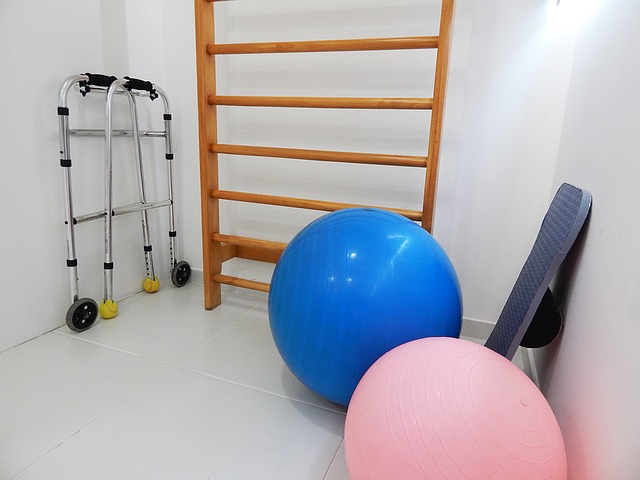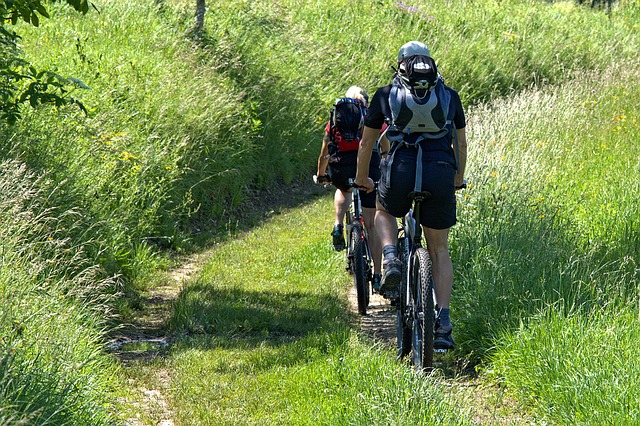***This post was contributed and may contain affiliate links.
Getting back on your bike after you’ve been injured is an incredible feeling. After weeks, months or even years of recovery, you finally feel able to reignite your passion. Your first ride back will be an undoubtedly momentous occasion and one you’ve looked forward to throughout your recovery. But it needs to be handled with care and in the safest possible way. To do this and to enjoy your first ride back to it’s fullest, read through the following tips.
See a Physical Therapist
 No matter what the cause was, every injury is unique and will heal differently. Some cyclists heal quickly without experiencing any effects afterward. Whereas other injuries can cause permanent weaknesses that need daily care and attention. So before you set off on your first bike ride, get professional advice. Consult with a physiotherapist, who can access your injury and how well it has recovered. They should be able to provide guidance on how much cycling you should be doing each week. They may also recommend that you wear an ankle or knee compression sleeve when you ride and daily exercises you should do. Their advice can prevent you from doing too much cycling too soon and increasing the risk of another injury.
No matter what the cause was, every injury is unique and will heal differently. Some cyclists heal quickly without experiencing any effects afterward. Whereas other injuries can cause permanent weaknesses that need daily care and attention. So before you set off on your first bike ride, get professional advice. Consult with a physiotherapist, who can access your injury and how well it has recovered. They should be able to provide guidance on how much cycling you should be doing each week. They may also recommend that you wear an ankle or knee compression sleeve when you ride and daily exercises you should do. Their advice can prevent you from doing too much cycling too soon and increasing the risk of another injury.
Enjoy yourself
 When you return to cycling, it can be tempting to start pushing yourself right away. You understandably want your fitness levels and technique to return to where there were before you were injured. But this is not something that will happen overnight. So instead of setting yourself unrealistic targets and challenges, enjoy yourself for a while. Ask some friends to join you on your first few rides and discover scenic routes in your local area. Rather than cycling as fast as you can, set a relaxed pace and take in your surroundings. This can help you rediscover your love of cycling and the simple pleasures that being on a bike can bring.
When you return to cycling, it can be tempting to start pushing yourself right away. You understandably want your fitness levels and technique to return to where there were before you were injured. But this is not something that will happen overnight. So instead of setting yourself unrealistic targets and challenges, enjoy yourself for a while. Ask some friends to join you on your first few rides and discover scenic routes in your local area. Rather than cycling as fast as you can, set a relaxed pace and take in your surroundings. This can help you rediscover your love of cycling and the simple pleasures that being on a bike can bring.
Do things gradually
 After a few slow and steady rides, you may want to start pushing yourself more. But remember that this should be done gradually and not all at once. Stick to short distances to begin with and increase this slightly each time. The intensity of your rides should also be something you increase over time. Don’t set yourself goals that will put your body and your injury under too much strain and pressure. Instead, enlist the help of a friend or personal trainer to stop you from doing too much at once. They can prevent you from causing more pain and injury to yourself while also encouraging you to improve. You should also consider taking part in other forms of exercise which can assist your cycling. Swimming is particularly good for cyclists and runners with knee injuries.
After a few slow and steady rides, you may want to start pushing yourself more. But remember that this should be done gradually and not all at once. Stick to short distances to begin with and increase this slightly each time. The intensity of your rides should also be something you increase over time. Don’t set yourself goals that will put your body and your injury under too much strain and pressure. Instead, enlist the help of a friend or personal trainer to stop you from doing too much at once. They can prevent you from causing more pain and injury to yourself while also encouraging you to improve. You should also consider taking part in other forms of exercise which can assist your cycling. Swimming is particularly good for cyclists and runners with knee injuries.
As eager as you might be to get back to cycling, never push yourself to do too much. This can increase the risk for another injury which could take you longer to recover from. Talk to your doctor for more advice and to get the go-ahead to return.
**** This post is strictly informational and is not meant to replace the advice of your health care provider. Women’s lifelink, it’s owners, administrators, contributors, affiliates, vendors, authors and editors do not claim that this information will diagnose, treat, or improve any condition or disease.
 Women's Life Link Be Well, Be Happy, Be YOU!
Women's Life Link Be Well, Be Happy, Be YOU!




